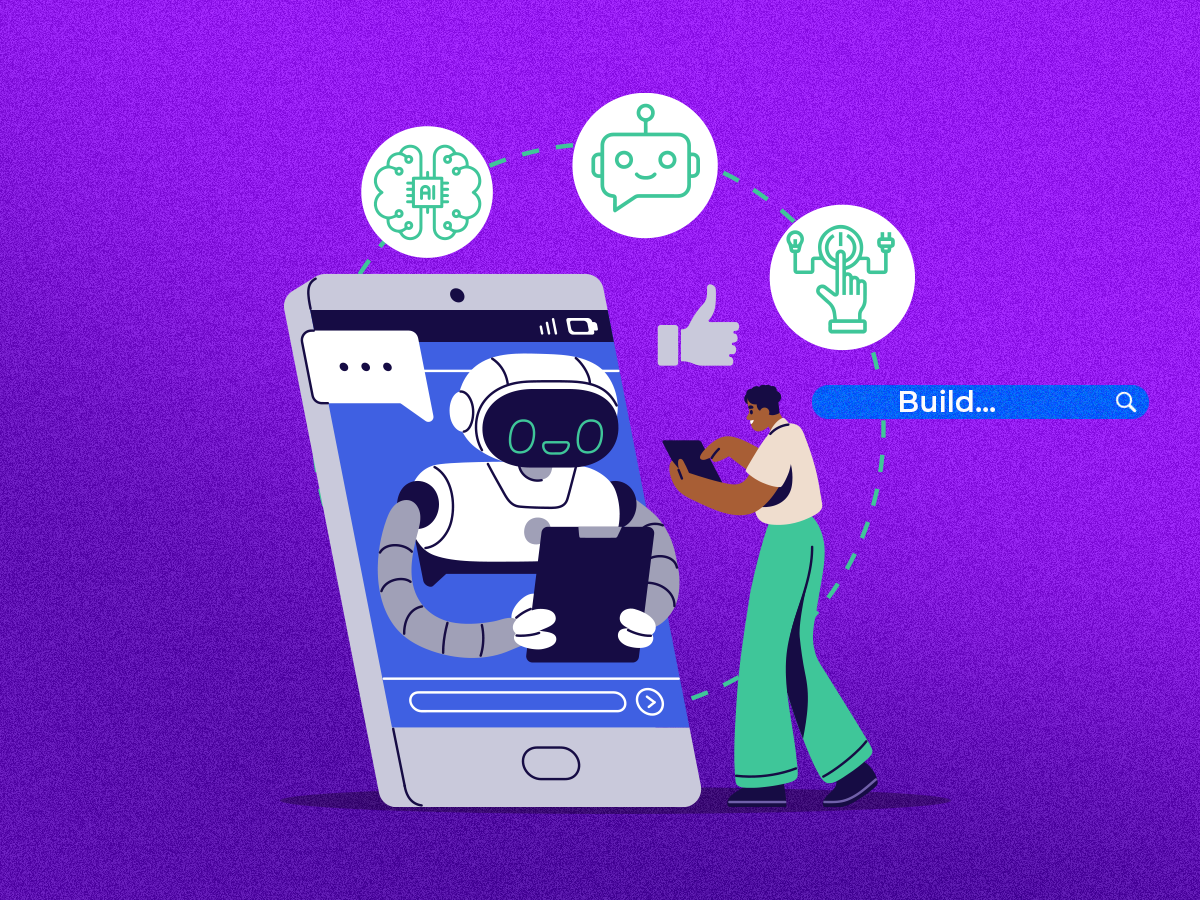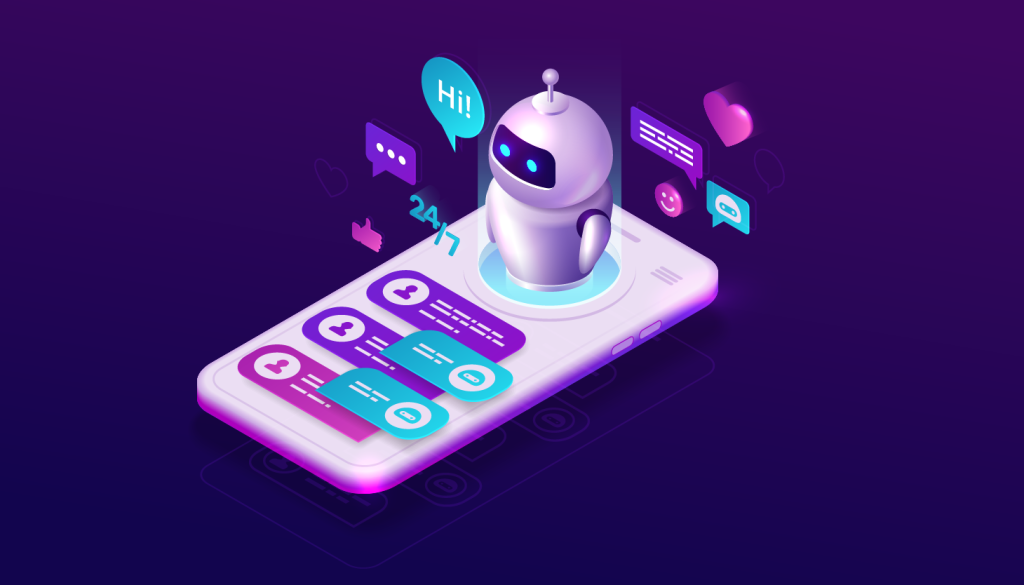
Learn the benefits of AI chatbot integration with your website. Both you and your customers will benefit when you embed chat functionality.
Gone are the days of customers searching through knowledge centers and FAQs for answers to their questions. With AI chatbot integration on your website, the user experience of getting answers to common questions has come a long way.
But for customers to enjoy this fast, simple resource, you have to enable it on your website and offer the chatbot a knowledge base to draw from. Learn more about how offering a personalized engagement option on your website can help guide users to the information they need to help them complete a purchase or improve their satisfaction with your organization through outstanding customer service.
As you consider whether a website chatbot is worth the implementation time and cost, learn about the benefits your customers will experience.
Many companies aren’t large enough to justify round-the-clock customer support. And yet, customers can visit your website seeking answers at all times of the day.
Instead of adding something to their to-do list for when you reopen, they can chat with the bot, get their answers and move on at their convenience.
The first step in interacting with a chatbot is generally for the user to share their contact information. This makes them a known user and allows you to tailor their experience from that moment forward.
Integrate the AI chatbot with a CRM or marketing automation program to get the most from the technology. Then consider personalizing the customer’s experience in these ways.
Hiring customer support representatives who speak all languages is a challenge. You can certainly hire for the most popular languages in the areas you market to, but you’ll likely still be missing out on being able to support a few customers based on language barriers.
AI chatbots can be multilingual, allowing them to understand and interact with people from all over. This helps you provide support like never before.
Customers want to complete simple tasks on their own. Maybe they are seeking product information or they might be submitting a service request. No matter the task, they might not want to have to interact with another person to accomplish it.
Chatbots can help reduce friction between you and your customers by directing customers to the information they are seeking.
Based on website behavior, you might suspect that a customer is encountering a problem or wrestling with whether to complete an action on your site or not. Chatbots can monitor user activity and activate to offer suggestions when they encounter specific behavior.
For example, when a known user visits the site, the chatbot can alert them to changes in product availability since the last time they visited. Or if they seem hung up on a specific page within the checkout experience, the bot can activate and help guide them through the process.
Customers might not want to stay on your website to receive support. They might want to get it through social media, email, phone or messaging apps. And because technology has advanced so much, they also expect to be able to have the same support experiences across various platforms and channels.
Using the same chatbot, your organization can integrate it into various communication channels to reach your customers how and when they want to interact with you.
Customers are not the only ones who win when a company activates a chatbot. The business also benefits in many ways.

As your chatbot interacts with customers, it is learning and improving its interactions. It’s also building a log that your customer service team can review to help improve your support and customer education.
Today’s bots can even understand sentiment in ways we could only imagine years ago. That means they understand language nuances to tailor their experiences to the customer.
Closing a chat session with a few quick questions can offer your team greater insights into the customer’s satisfaction and areas where you can improve. You could keep it as simple as one survey question to avoid bogging the user down. Just ask for a star rating of how the support interaction was.
You can even allow your chatbot to offer incentives for completing the survey, such as a discount code or special offer. That way, the customer is enticed to share their thoughts to ensure you know as much about your customers as you possibly can.
You can operate on a leaner customer service team or allow them to focus on continuous improvement because you’ll get fewer requests. Chatbots can handle repeated tasks and respond to simple questions to reduce the number of inquiries you experience. And you’re not the only one benefiting. The customer is also getting answers to their questions quickly.
Some tasks you can allow the chatbot to handle include:
Customers are more likely to share their thoughts or frustrations with your organization if the path to doing so is easy. They might not reach out about small requests or open a minor ticket because of the time and thought that it requires. But a chatbot can remove those areas of friction.
Now you’ll engage more with your customers during times you didn’t even know they needed you. That little chat popup can work wonders for guiding you toward the information you need.
Because chatbots reduce bounce rates and cart abandonment rates while upselling similar products and services, they help increase sales and engage website visitors.
Depending on how you set up your chatbot, it can also nurture customers through the process of making a purchase even during various website visits.
Now that you know the incredible benefits you and your customers can experience with a chatbot, you’re ready to start considering how to integrate one into your website. Follow these steps for the best results.
What purpose does the chatbot serve? Think about your audience and their needs. Then you’ll know what functions you want the chatbot to offer so you can narrow down which provider will be right for you and your customers.
As you shop for a chatbot, you’ll discover there are many on the market today. The best option is one that has both AI functionality along with live chat options so that AI can transfer the conversation to a real person when needed.
You also want to look for an option that seamlessly connects to a knowledge base so you can import FAQs and other data.
You’re in control of the nice messages the bot sends to initiate conversations and gain insights into user intents. You can help your bot understand context based on your products and services by designing conversation flows.
With time, your knowledge base will grow based on the conversations your bot has, but you’ll need to help it get started.
Before adding the bot to your website and inviting customers to interact with it, you’ll need to put it through extensive testing. Ask it a variety of questions and see how it does. That way, you ensure it doesn’t frustrate customers more due to not fully understanding what they are looking for or trying to accomplish.
Once you’ve ensured the chatbot is ready for customer interactions, you can launch it and allow it to begin interacting with your customers. Review all the channels it integrates to and ensure you’ve optimized its use by connecting it appropriately.
Then monitor the results and continue training and programming your bot based on what you see and learn.
Offering AI bot interactions is just a small part of your total website strategy. You should have a plan for handling lead generation, sales, known visitors, nurturing and more through your website. The team of digital marketing experts at New Light Digital can help you get the most from your online presence. Schedule your free consultation now to learn how your website can become a sales and customer service engine.
Further reading: